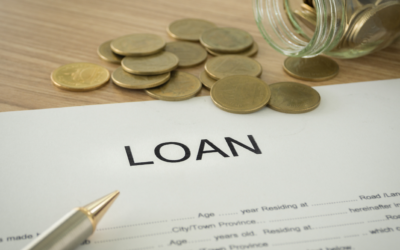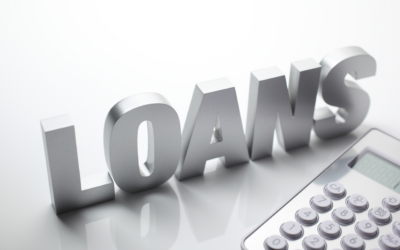Commercial real estate is a highly dynamic industry with significant investments and inherent risks. Whether you are a seasoned investor or new to the field, it is essential to understand the lifecycle of commercial real estate assets.
From the acquisition of the property to its disposition, each stage of the lifecycle presents unique challenges and opportunities that can impact the success of your investment.
In this blog, we will explore the critical stages of the lifecycle of commercial real estate assets and provide valuable insights into how to manage your investments effectively.
Whether you want to purchase your first commercial property or expand your portfolio, this guide will equip you with the knowledge you need to make informed decisions and maximize your returns.
What Is The Real Estate Cycle?
The real estate cycle refers to the ups and downs in the real estate market over time. Like many other economic sectors, the real estate market experiences growth, stability, and decline periods.
Various factors, such as interest rates, supply and demand, and economic conditions, can influence these cycles.
While the real estate cycle can be challenging to predict, understanding the phases can help investors decide when to buy, hold, or sell their properties.
In addition, by staying informed about market trends and economic conditions, investors can position themselves to take advantage of opportunities during each phase of the real estate cycle.
Importance Of The Real Estate Cycle
Understanding the real estate cycle is essential for anyone involved in real estate investing or development. By being aware of the current phase of the process, investors and developers can make informed decisions about when to buy, hold, or sell their properties.
During the expansion phase, for example, investors may seek to acquire properties before prices rise too high, while during the hyper-supply phase, they may wait for prices to drop before making a purchase.
Similarly, during the recession phase, investors may choose to sell their properties to minimize losses. In contrast, during the recovery, they may hold onto their properties to take advantage of rising prices.
By understanding the real estate cycle, investors can identify emerging trends and market opportunities.
For example, during the hyper-supply phase, investors may look for distressed properties that can be purchased at a discount. In contrast, they may focus on value-add opportunities during recovery to maximize their returns.
Furthermore, understanding the real estate cycle can help investors manage risk. By being aware of the potential for market fluctuations and economic downturns, investors can take steps to minimize their risk exposure and protect their investments.
Overall, the real estate cycle is essential for investors and developers looking to make informed decisions about their real estate investments.
By staying informed about market trends, economic conditions, and the current phase of the cycle, investors can maximize their returns and achieve long-term success in the real estate market.
The Stages In The Life Of A Commercial Real Estate Property
Phase one: Acquisition
The acquisition phase is the first stage in the lifecycle of a commercial real estate asset. It involves purchasing a property to generate income through leasing or resale.
This phase is critical because it sets the foundation for the entire investment, and any mistakes made at this stage can significantly affect the project’s success.
During the acquisition phase, investors must conduct thorough due diligence to assess the property’s financial, physical, and legal aspects.
During the property’s cash flow, investors must conduct thorough due diligence that involves inspecting the property’s financial, physical, and legal parts.
Legal includes reviewing the property’s title, zoning, and any existing contracts or agreements that may impact its value.
Once due diligence is complete, investors must negotiate a purchase price with the seller and secure financing for the project. This often involves working with lenders, brokers, and legal professionals to ensure all the necessary documentation is in place.
The acquisition phase requires significant time, effort, and resources. However, it is essential to approach this phase with a long-term perspective, considering the potential for future growth and profitability.
By carefully selecting the right property and conducting thorough due diligence, investors can set themselves up for success in the later stages of the lifecycle.
Phase two: Value-add
The value-add phase is the second stage in the lifecycle of a commercial real estate asset. During this phase, investors focus on improving the property’s value and increasing its income potential.
Value-add projects typically involve a combination of physical renovations, operational improvements, and marketing efforts.
Physical renovations may include upgrading the property’s infrastructure, modernizing its amenities, or reconfiguring the layout to better suit tenants’ needs.
Operational improvements may involve reducing expenses, improving property management, or renegotiating lease agreements to maximize revenue.
Finally, marketing efforts may include rebranding the property, enhancing its visibility online, or targeting specific tenant demographics to increase occupancy rates.
The value-add phase requires careful planning and execution to ensure that improvements are made efficiently and cost-effectively.
Investors must work closely with contractors, architects, and property managers to develop a clear action plan and monitor progress regularly.
Additionally, investors must remain mindful of their budget and timeline to ensure the project remains financially viable.
The value-add phase presents an excellent opportunity for investors to increase the property’s income potential and maximize returns.
However, it also carries inherent risks, as the success of the project depends on a range of factors, including market conditions, tenant demand, and the quality of the improvements made.
Investors can mitigate these risks and achieve their investment goals by conducting thorough research, developing a clear plan, and working with experienced professionals.
Phase three: Stabilization
The stabilization phase is the third stage in the lifecycle of a commercial real estate asset. During this phase, investors maximize the property’s cash flow and stabilize its operations.
The stabilization phase typically occurs after the completion of the value-add phase, although some properties may enter the stabilization phase immediately after acquisition.
During stabilization, investors aim to achieve a consistent occupancy and rental income level. This often involves maintaining solid relationships with existing tenants, attracting new tenants, and implementing effective property management practices.
Additionally, investors may seek to refinance the property to take advantage of lower interest rates or to access equity for future investments.
The stabilization phase requires excellent attention to detail and a deep understanding of the property’s operations. In addition, investors must have a comprehensive understanding of their property’s financials and be able to anticipate and respond to market or tenant demand changes.
Additionally, investors must remain proactive in addressing any issues that may arise, such as tenant turnover or unexpected expenses.
Successful stabilization is crucial to the investment’s long-term success, as it ensures a steady income stream and provides a solid foundation for future growth.
Investors can maximize the property’s potential and achieve their investment objectives by maintaining a strong focus on operations and being prepared to adapt to changing market conditions.
Ongoing Evaluation and Exit Strategies During the Lifecycle of a Commercial Real Estate Asset
Throughout the lifecycle of a commercial real estate asset, ongoing evaluation and assessment are crucial to ensuring the investment remains financially viable and meets the investor’s objectives.
This includes regularly monitoring the property’s financial performance, market trends, and tenant demand.
By staying up-to-date on these factors, investors can make informed decisions about the property’s future and identify exit opportunities when they arise.
Exit opportunities can take several forms, including selling the property, refinancing the existing debt, or entering into a joint venture with other investors.
The decision to exit the investment often depends on various factors, such as the investor’s financial goals, the property’s current and projected performance, and the prevailing market conditions.
Investors must also remain mindful of the tax implications of their investment decisions. For example, property selling may trigger capital gains taxes, significantly impacting the investor’s overall return.
Working closely with experienced tax professionals to develop a strategy that minimizes tax liabilities and maximizes returns is essential.
Throughout the asset lifecycle, ongoing evaluation and assessment are critical to the investment’s long-term success.
By remaining vigilant and responsive to changes in the market and tenant demand, investors can position themselves for success and identify exit opportunities when they arise.
Additionally, working with experienced professionals, such as brokers, attorneys, and tax professionals, can help investors navigate the complexities of the commercial real estate market and achieve their investment objectives.
Final Takeaway,
Commercial real estate investing offers a potentially lucrative opportunity for investors to generate income and build wealth over the long term.
However, understanding the lifecycle of a commercial real estate asset is essential to making informed investment decisions and maximizing returns.
The three phases of the asset lifecycle – acquisition, value-add, and stabilization – each require careful planning and execution to achieve success.
Additionally, ongoing evaluation and assessment throughout the investment period are crucial to ensuring the investment remains financially viable and meets the investor’s objectives.
Investors must remain mindful of the risks associated with commercial real estate investing and work closely with experienced professionals to mitigate them and achieve their investment goals.
This includes conducting thorough due diligence, developing a clear action plan, and staying up-to-date on market trends and tenant demand.
Finally, investors must be prepared to identify and seize exit opportunities. This requires a deep understanding of the property’s financials, market conditions, tax implications, and careful consideration of the investor’s financial goals.
By following these guidelines and remaining proactive throughout the investment lifecycle, investors can maximize the potential of their commercial real estate assets and achieve long-term success.





